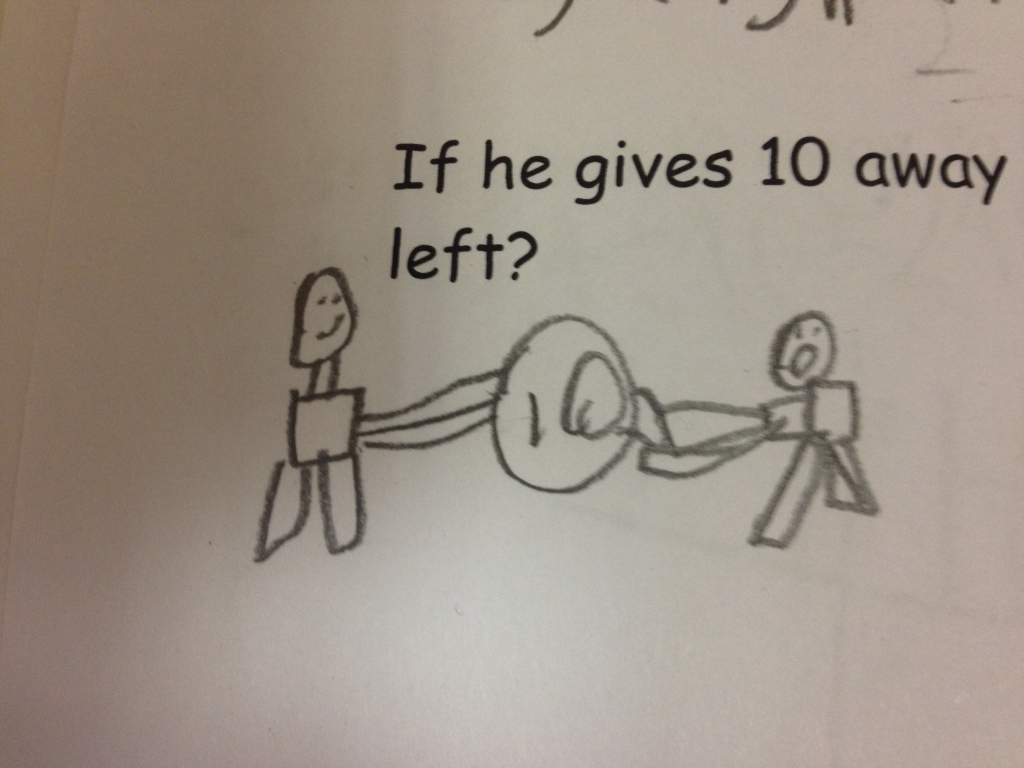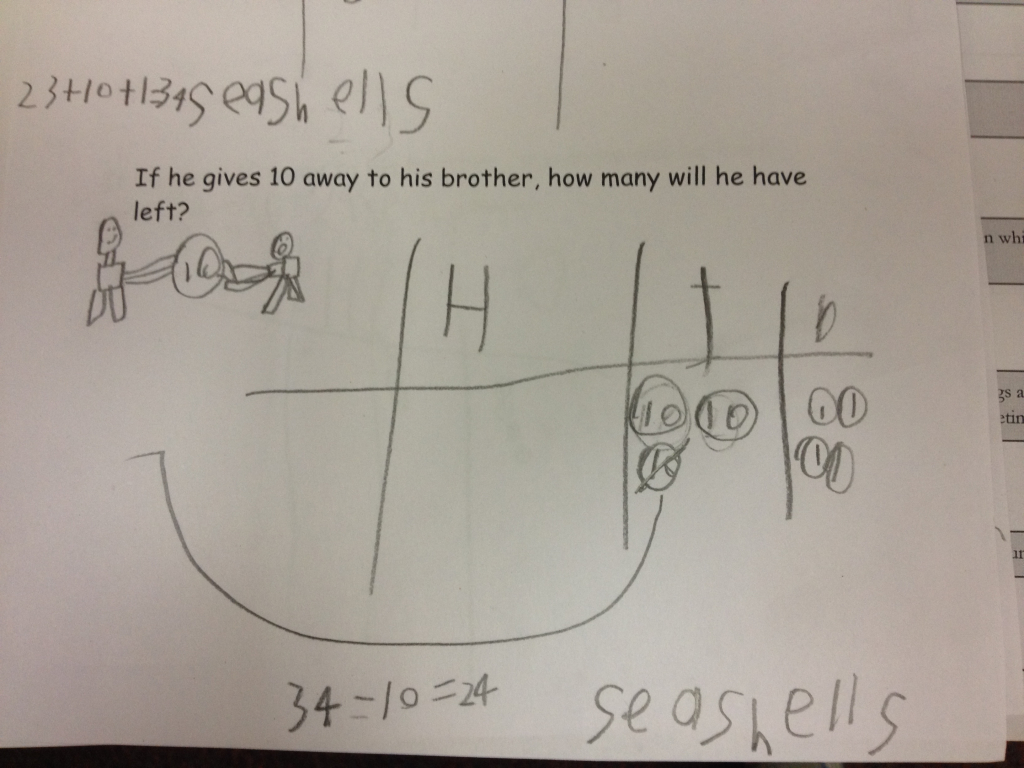When I was in second grade, we sat at our desks and raced through pages of addition and subtraction problems. As a teacher of English learners, I’m sure my students often wish life could be so easy. However, today’s second graders learn math in an entirely different – and much better – way. They learn the concepts behind the place value work they do. It’s not enough to “carry the ten.” Kids need to understand they are conceptually regrouping ten ones for a single ten. I am not lying when I say I only just realized that’s what I’ve been doing for the last 40 years when I “carried the ten”!
Earlier this week, I was working with a second-grade math group, which included three English beginners: one Israeli, one Korean and one from Bahrain. We were practicing the strategy of “Read-Draw-Write” to solve a word problem. With help, they read the problem and I explained some of the tricky words. Next it was time to draw the problem before writing the equation and answer sentence. They had learned to draw a place value chart with symbols for the tens and ones. I turned to help the Bahraini boy, who had been absent the previous day and needed to catch up. By the time I got back to the Korean boy, he had finished his drawing to illustrate giving away 10 seashells. It looked like this:

So cute! And so wrong. I had to remind him that by “draw,” we mean draw a place value chart.
He did it, reluctantly, but then he insisted on drawing an arrow back to his original sketch. Fair enough.

Reminds me of another confused little Korean kid I knew in Laos. Check it out: Korean Math Warriors.
